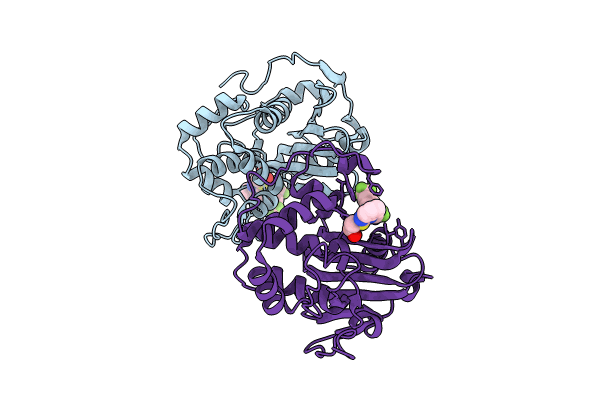
Deposition Date
2022-12-19
Release Date
2024-07-10
Last Version Date
2024-11-06
Entry Detail
PDB ID:
8C0P
Keywords:
Title:
Crystal structure of S. aureus BlaR1 sensor domain in complex with a boronate inhibitor
Biological Source:
Source Organism:
Staphylococcus aureus (Taxon ID: 1280)
Host Organism:
Method Details:
Experimental Method:
Resolution:
1.97 Å
R-Value Free:
0.23
R-Value Work:
0.19
Space Group:
P 1 21 1


